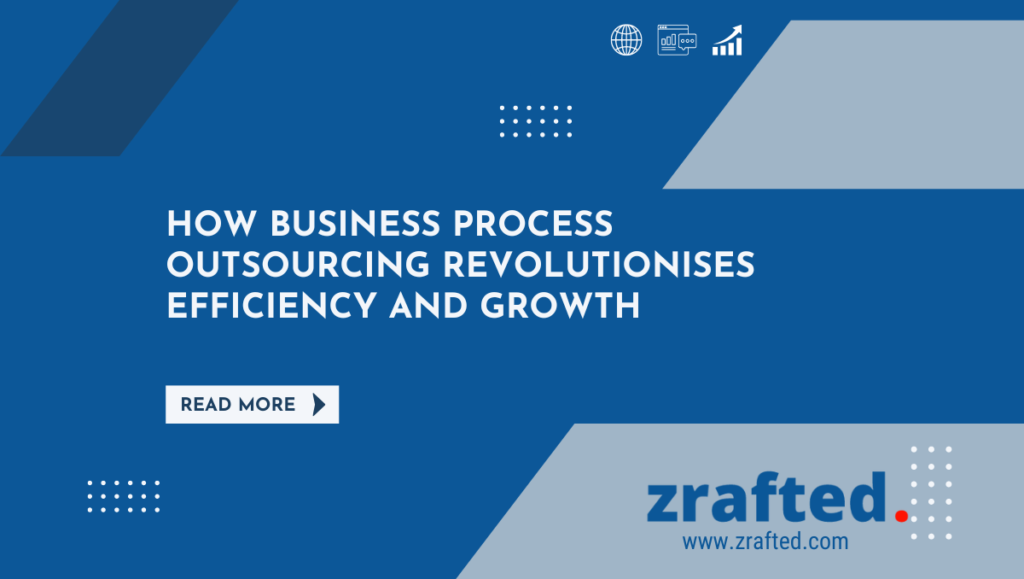What is Business Process Outsourcing?
Business Process Outsourcing (BPO) has evolved the way in which businesses used to operate, it now allows them to streamline majority of their operations, optimise resources and cut costs while enabling them to focus on core business activities.
In this blog, we will learn what is BPO? and how it impacts businesses around the world. We will dive into its definition, basic concept and highlight the benefits it has to offer for your business. If you understand the logic behind BPO, it will enable you to achieve greater heights in your business while making it a low liability entity. You will gain insights on how BPO can transform your existing business and achieve greater heights.
If you still have any queries after going through this, feel free to contact our team here.
Types of Business Process Outsourcing
Front-office outsourcing
Front office outsourcing involves hiring virtual staff for customer support, customer sales, lead generation, email handling, appointment setting, live chat support, outbound or inbound calls. These are some common outsourced processes in front desk operations by companies. Apart from this, you can outsource any task that you want to. There are no set restrictions and our team can help you decide on that after analysing your business processes.
Hiring an expert virtual assistant for customer support or a similar service will help you improve response times, enhance customer experiences, focus on resolving customer problems, free up internal resources which can be utilised for other core activities.
Back-office outsourcing
Back office outsourcing comprises of activities that does not involve dealing with customers directly. It can be processes such as accounting and finance, human resources management, data entry, management, pay roll management, check and balance or anything that you are willing to outsource.
By outsourcing these processes, companies can focus on reducing administration expenses, cut their costs and get better productivity, reduces burden by getting expert staff perform their tasks. By getting experts on these back office tasks, companies can benefit a lot.
Knowledge process outsourcing (KPO)
Knowledge process outsourcing (KPO) is outsourcing high level knowledge based tasks that required specialised skills. These skills require expertise in a specific skill. Such tasks involve development, research, data analytics, cloud architecture, software development, application development, website development, digital marketing, graphics designing, content writing, property management, artificial intelligence and so much more.
KPO allows companies to access top talent around the world, hire them virtually at low costs and get the work done with higher efficiency. This will help the core team to focus more on other activities while getting the expert talent on board.
How can you Implement BPO Successfully?
A business can only benefit from BPO services if they have implemented it successfully. It is a complex task and you may end up loosing money if it is not done correctly. Hence, you should always hire an expert BPO company such as Zrafted.
I have been into BPO for more than 8 years now and I’ll teach you on how you can achieve better results.
Follow these steps:
Identify the processes that you can outsource
It is essential to conduct a thorough assessment of existing business processes. Then you can determine which ones are the best to be outsourced. Suitable processes are repetitive, time consuming or processes that require specialised skills. These tasks are mostly costly, but if outsourced correctly, they can become super easy and cost effective.
Identifying the right processes to outsource
It is essential to conduct a thorough assessment of existing business processes to determine which ones are best suited for outsourcing. Processes that are repetitive, time-consuming, or require specialised skills are often good candidates for outsourcing.
Evaluating potential outsourcing vendor
Choosing a right vendor for your outsourcing tasks can be a crucial thing. The factors you should consider before shortlisting your partners are:
- Experience
- Expertise
- Reputation
- Scalability
- Cultural Alignment
- Communication Skills
- Pay Rates
A robust evaluation process helps ensure a compatible and mutually beneficial partnership. Research and select an outsourcing vendor that aligns with your business requirements and goals. Negotiate contracts that clearly define the scope of work, deliverables, pricing models, performance metrics, and termination clauses.
Establishing clear communication channels and expectations
Effective communication is essential for a BPO business. Because of remote locations, if your BPO vendor is not good at communication, you will have to face a hard time getting things done. Establishing clear lines of communication, defining roles and responsibilities, and setting expectations upfront facilitate smooth collaboration and minimise misunderstandings.
Defining service level agreements (SLAs) and key performance indicators (KPIs)
SLAs and KPIs are essential contractual elements that outline the expected performance standards and metrics for the outsourcing partner. Well-defined SLAs and KPIs enable effective monitoring of performance and provide a basis for assessing the success of the outsourcing arrangement.
Ensuring data security and privacy
Protecting sensitive data is paramount when outsourcing business processes. Robust data security measures, confidentiality agreements, and compliance with relevant regulations should be established to safeguard confidential information and maintain customer trust.
Conducting a comprehensive cost-benefit analysis
Evaluate the financial implications of outsourcing, including cost savings, increased operational efficiency, and potential risks. Consider both short-term and long-term impacts on the organisation.
Developing a transition plan for smooth implementation
Plan and execute a seamless transition from in-house operations to the outsourcing partner. Define roles and responsibilities during the transition period and ensure effective knowledge transfer and training.
Monitoring and evaluating the outsourcing relationship
Establish a framework for ongoing monitoring and evaluation of the outsourcing relationship. Regular performance reviews, communication, and periodic assessments of SLAs and KPIs enable proactive management and continuous improvement.
Best Practices for Managing BPO Relationships
Building a strong relationship with the outsourcing partner
Foster open and transparent communication, establish trust, and promote collaboration with the outsourcing partner. Maintain a partnership mindset and work together towards shared goals.
Effective communication and regular performance reviews
Maintain regular communication channels with the outsourcing partner to address issues, provide feedback, and align expectations. Conduct periodic performance reviews to assess adherence to SLAs and KPIs and identify areas for improvement.
Mitigating risks and resolving conflicts
Proactively identify potential risks and establish contingency plans to mitigate them. Promptly address conflicts or issues that arise, maintaining a constructive approach to finding solutions that benefit both parties.
Continuous improvement and adaptation
Encourage a culture of continuous improvement in the outsourcing relationship. Seek opportunities for innovation, optimize processes, and adapt to changing business needs and market dynamics.
Conclusion
Business process outsourcing offers immense opportunities for organisations to optimise their operations, enhance efficiency, and focus on core competencies. By understanding the different types of BPO, considering key implementation factors, following a structured approach, and adopting best practices for managing outsourcing relationships, businesses can harness the full potential of BPO. Successful case studies serve as proof of the transformative power of BPO, providing inspiration and guidance for organisations embarking on their outsourcing journey. Embracing BPO can propel businesses towards growth, innovation, and sustainable success in today’s dynamic business landscape.






